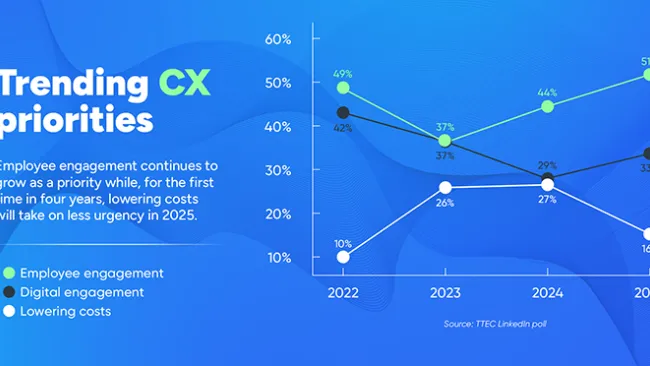It’s always been important to treat your employees well, but doing so now plays an increasingly crucial role in your brand’s success – and it’s not just your workers who are paying attention to it. More and more, customers are considering how brands treat and support their workers when making buying decisions.
This marks a shift companies can’t afford to ignore. The customer relationship has become more complex in this post-pandemic era; keeping customers happy takes more than merely providing a quality product or service. They want to know they can trust brands to support their workers and align to their values before making buying decisions.
At the same time, employees increasingly want to work for a company they can feel good about, making it clear that customers and workers alike place great importance on brands’ social conscience.
To send a message to customers that you care about your employees and the quality of customer interactions, and to keep associates engaged as true ambassadors of your brand, companies should realistically plan to pay in-house U.S.-based CX associates $30 an hour, the living wage in the United States for one adult and one child.
Paying that type of wage in an area of the business built on low margins may sound scary, but there are ways to tackle the challenge and save your organization money overall. Here’s how, and why it’s important.
Employee wellbeing should matter to your brand
It may seem counterintuitive but paying in-house, U.S.-based associates $30 an hour is the most efficient wage for businesses because it spurs a great return on investment – namely in customer dollars.
A new McKinsey study shows customers are strongly influenced by how a brand treats its workers. Other research shows 81% of consumers must be able to trust a brand to “do what’s right” if they’re going to buy from it, and 82% of customers are more likely to patronize a business that takes extra steps to ensure the wellbeing of its employees.
Beyond customer demand, an expanding body of evidence points to $30 an hour being not just a living wage but also an “efficiency wage” for in-house, U.S. workers – that sweet spot where employers pay above minimum wage in order to attract and retain quality talent and reap significant ROI from it.
Investing in employees makes smart business sense
But that’s not to say money is the only answer. Increasingly, workers are thinking about more than just their salary; they have more altruistic motivations. They want the chance to help others, work with people who share a similar passion for the work, and work for a company they feel supports their altruistic endeavors. This provides more flexibility in what wages employees are willing to work for.
This high-performing internal culture can be difficult to achieve, especially over the short term. The good news is you can find it in a great outsourcing partner. Look to partner with a company that has type of atmosphere already engrained in their culture.
A CX partner that associates are proud to work for can win the war for talent with more than just a wage. And it can attract talent that otherwise would be out of reach. That will immediately alleviate some of the wage pressure for you while still meeting customer demand for ethical operations and amazing customer experiences.
More than half of workers (56%) won’t take a job with an employer that doesn’t share their values, and shifting work to an outsourcing partner can help ensure associates are having that need met.
Make an efficiency wage work for your business
A strong outsourcing partner can leverage its economies of scale and skill to provide a great employee experience and attract high-caliber labor for less money than you could do in-house. That means you get to deliver the next-level CX your customers expect at a lower total cost. Here are some other ways to balance living and efficiency wages:
Intelligent automation: You likely can shift some of the work being done by human associates to automation solutions. While some customer interactions require a human touch, certain tasks – such as transactional ones; or repetitive, menial, back-office – jobs can be performed faster and more affordably by automation.
Offshoring and nearshoring: If there are contact center jobs that don’t need to be performed in the U.S., offshoring or nearshoring to locations around the world can offer substantial cost savings without sacrificing CX quality along the way.
Reassessing workforce needs
With tools such as automation, offshoring, nearshoring, and workforce optimization, you may realize you no longer need as many U.S.-based workers. Reducing the number of American workers you have can help ensure the ones who remain receive a living wage.
Invest your people to grow loyalty and revenue
Your customers want to support brands that do the right thing and treat their employees well, so investing in paying a living wage will pay dividends in the form increased customer satisfaction, retention, loyalty, and revenue. In fact, companies earning $1 billion a year can expect to earn, on average, an additional $700 million within three years of investing in the customer experience, according to The Temkin Group.
If all this seems all seems daunting, especially as you need to focus on your brand’s core business functions, reach out to an experienced CX outsourcing partner for help. The right partner will help you tap into the people, technology, and strategy you need to make a living wage and efficiency wage work for your employees and your business.

















